"In 2012 we started this project called Venezia x Izu, to help creating a connection not only between Venice and Izu, but also between Izu and the rest of the World. In 2020 Japan will host the Olympic Games and Izu will host the cycling events at Shuzenji Velodrome. A big chance for less known local areas to become more open to foreign tourism and to build worldwide connections. Please feel free to contact us for whatever needs you should have while visiting Japan (including camping, water and electric supply)!"
Izu Peninsula, lesser known destination you must see in Japan (part 5)
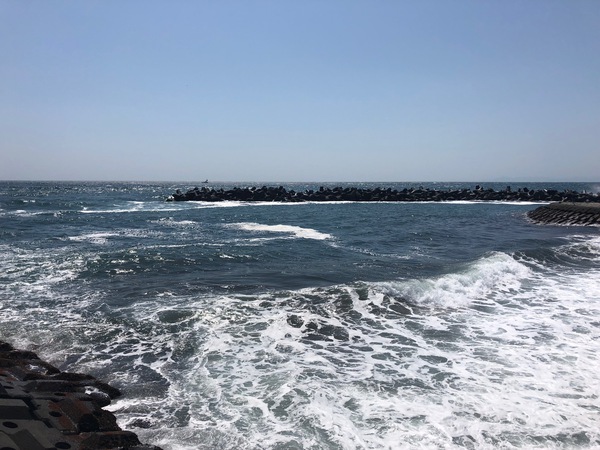
Almost every Sunday, wintertime, summertime, I come to a small beach called Odoi near the small town of Toi.
I come with my daughter, as we both like to ride by car through the Izu Peninsula. It relaxes me and she seems relaxed too.
So, last week we came up from Shimoda through some very beautiful and still quite wild landscapes, to reach the town of Matsuzaki. From there you can go both inside to Mount Amagi and the Nishina Pass or follow the coast to reach the town of Toi.
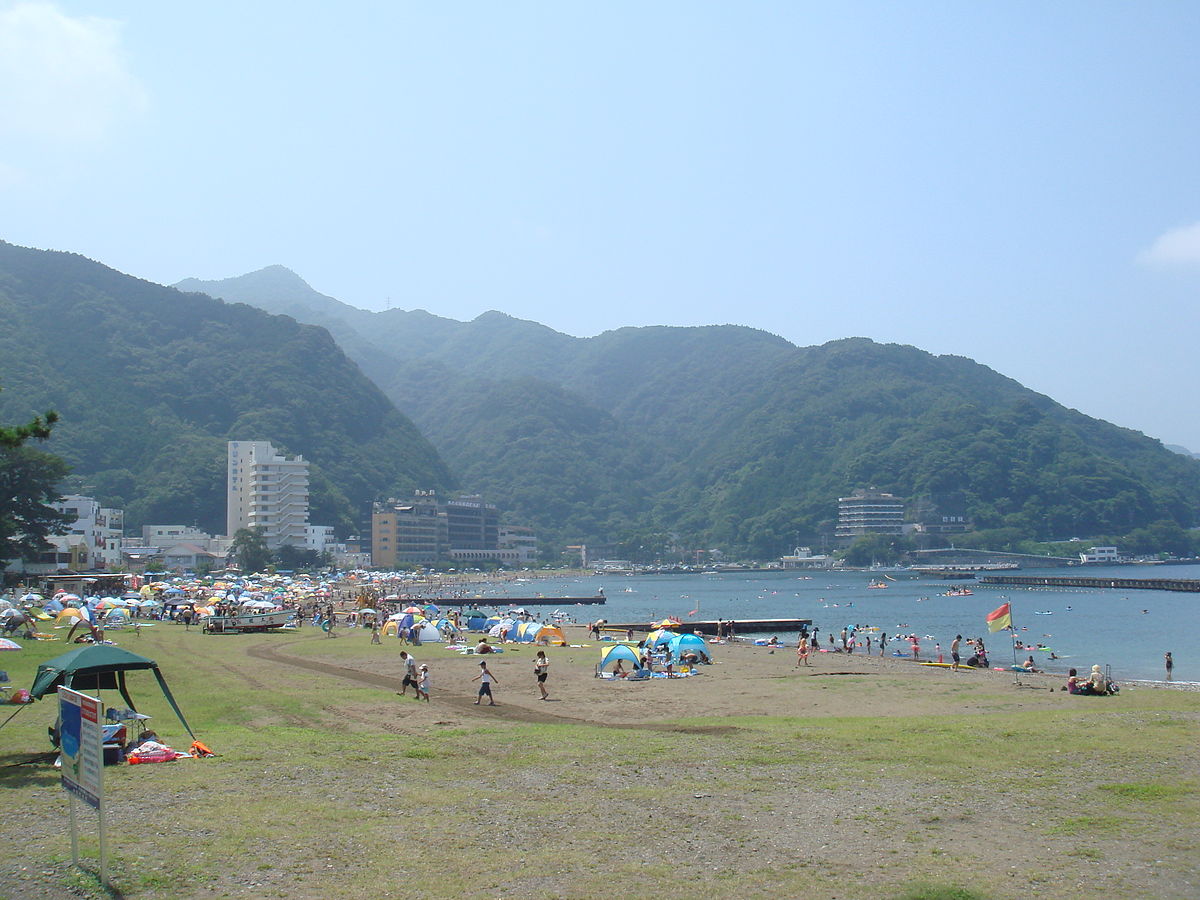
It is a small town but it has everything you might need. Two supermarkets, three or four convenience store, banks, post office, etc... And plus, it is not as crowded as other parts of the Peninsula, except maybe during the most popular Japanese summer holidays.
It is also famous as many other Izu towns for its hot springs.
The Odoi beach is very quite and lesser known than other beaches, so it is perfect to take a relaxing day off with family and children.

It is a small thing that probably only a father or a mother can understand, but its white and coarse sand can be easily removed from children hands and clothes after they have played on the beach.
Toi (and so Odoi) are reachable also by the Suruga Bay ferry that connects Toi and Shimizu City, on the Shizuoka coast:
https://www.dream-ferry.co.jp/en/
Then from here it is also possible to reach Mount Amagi or to continue to drive on the coast to reach the beautiful town of Heda which is part of the city of Numazu. The coastal road is tortous but very fascinating!
Next week I will write about Heda and its beautiful beach and port.
Alberto
Izu Peninsula, lesser known destination you must see in Japan (part 4)
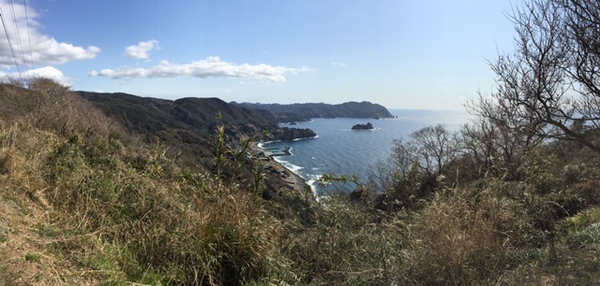
Last week I left you in the beautiful city of Shimoda, located in the most Southern part of the Izu Peninsula.
Once you leave Shimoda you can choose to go in two different ways, to go back up to Mishima City or Numazu City.
In this week's article I will show you some beautiful pictures of the Izu Southern coast between Shimoda and the small town of Matsuzaki.
In a very remote area there is a very strange and interesting place, Hakachizaki, where there is plenty of wild monkeys living free in a sort of small resort.
You have to be careful as they are also walking and staying on the street. They are not aggressive at all, but I prefer not to get out of the car, as with monkeys you never know...
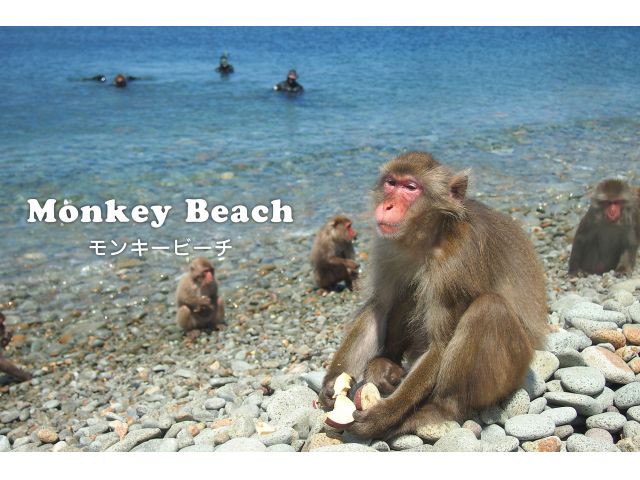
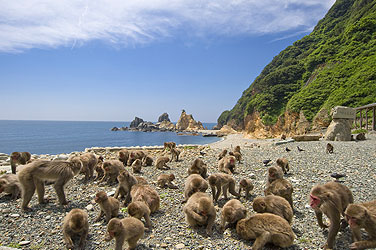
Going up a little further there is a small village very famous in Japan and one of the top spots of the Izu Geo Park. It is called Dogashima and it is well known for its typical volcanic stony coasts:

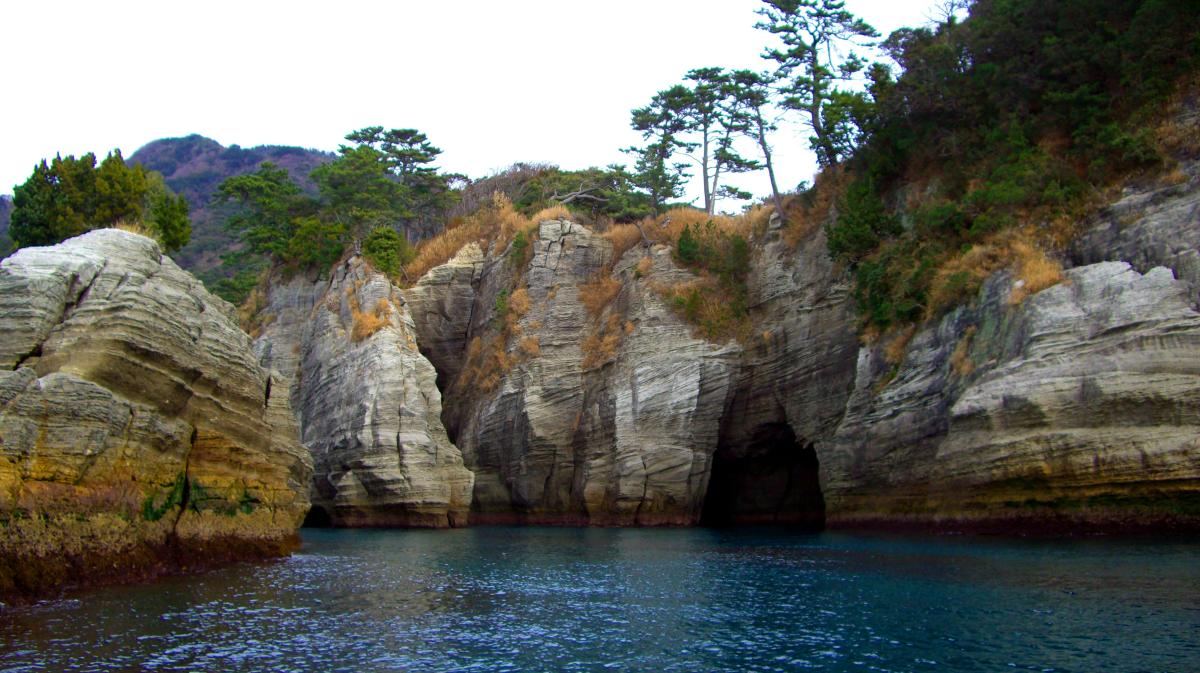
When in Dogashima you can take also a boat tour to the Blue Cave and around the beautiful coast. I suggest to avoid weekends and holidays as there should be plenty of tourists already.
Nearby there is Koganezaki, another suggestive and beautiful spot, where you can enjoy a stunning landscape and also visit a very popular Glass Museum.


There are so many beautiful places in this area that is even difficult to name them all. When I drive around there I always find something new once entering small and narrow roads. So the best thing to do is travel around by yourselves and see by your own eyes!
Koganezaki is near a small town called Matsuzaki. Here you can find supermarket, convenience stores and anything you might need to rest a little bit. From Matsuzaki you can take two different directions: go right to Mount Amagi of go straight to the town of Toi, proceeding on the West coast.
So next week we will continue our trip through the Western part of the Izu Peninsula (my favourite part).
Alberto
Izu Peninsula, lesser known destination you must see in Japan (part 3)
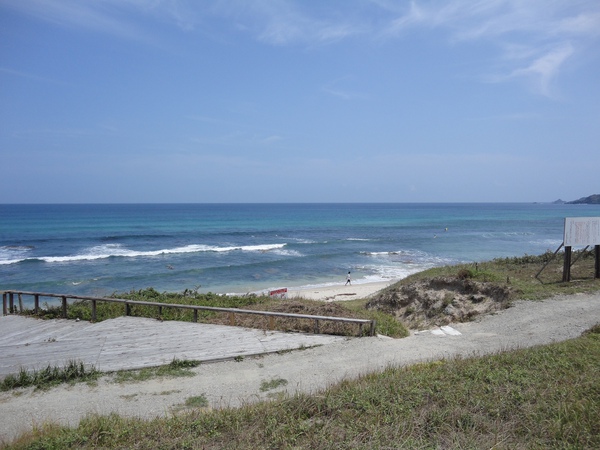
From Inatori Town on the East coast we can reach Shimoda (the biggest city in the Southern part of Izu) in about 30/40 minutes by car.
So it is close by, but the seaside changes a lot.
We go from the stony coasts in the East to the white sandy beaches of Shimoda.
The first time I went there I thought I was in some beach of Costa Rica.
I've been to Costa Rica about 15 years ago and I felt in the same way, as the East coast (Atlantic) and the West coast (Pacific) are a lot different there too.
The most famous beach in Shimoda is called Shirahama beach (also known as Charahama, as many young "charai" guys and girls go there in the summer to do "nanpa"). "Charai" means flashy, showy, so usually these guys and girls are heavy tanned and blond haired, while "nanpa" means flirting. It is extremely crowded in summer, so I usually prefer to go to some nearby smaller beaches, with the same white sand and crystal water but less people around.
As I wrote in the previous article, the Eastern and Southern part of Izu can be reached also by train from Tokyo (get off at Izu Kogen Station for Mount Omuro or to Shimoda Station for these beaches).
Shimoda is also famous as it was the first place where American Commodore Perry landed in 1854, ending the isolation of Japan from the rest of the World. So you can walk the Perry Road with its many shops and see everywhere his black ships.
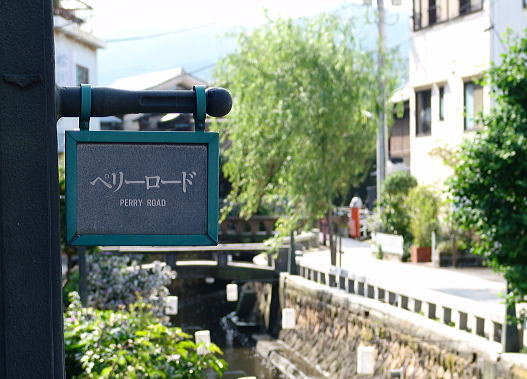
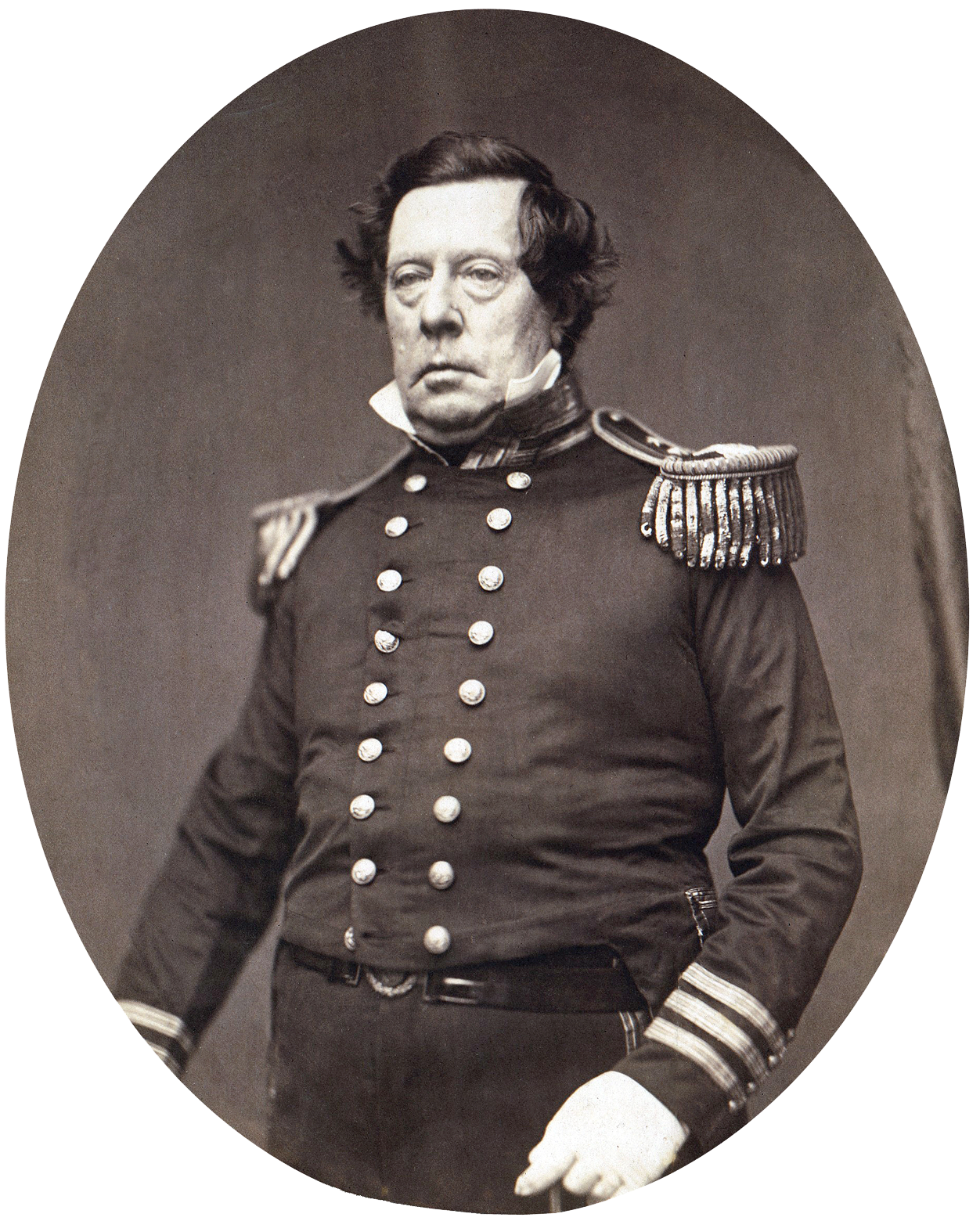
Then going through Shimoda to the other end of it, you can choose to go right to Mount Amagi (Central part of Izu) or left to the Western part (Minami Izu, up to Toi and Heda).
In a few meters you go from a Western stylish beach town landscape to mountain and countryside. Very interesting experience.
Unfortunately, from Shimoda you can't go to Amagi or west by train, so the only alternative to the car is get on a local bus.
Will continue our journey through Izu in the next blog!
Alberto
Izu Peninsula, lesser known destination you must see in Japan (part 2)
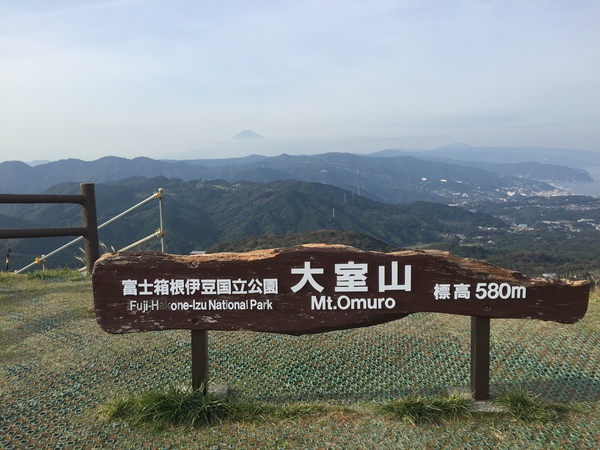
In last week article I've started to introduce you the Izu Peninsula, seen by a foreigner point of view.
This time I'd like to write about the Eastern part, which comprehends cities like Atami, Ito and Higashi Izu Cho (Inatori, Izu Kogen, Atagawa, etc.).
One of my favourite spots is a round shaped mountain called Mount Omuro:


It is surrounded by a beautiful park and its colour changes within seasons. Green during summer and brown in winter time, as its grass is burned in autumn, following a local tradition.
It is near Izu Kogen, a onsen village very famous all over Japan, as many rich people from Tokyo and Yokohama own there their summer vacation second houses.
Recently, as young people is moving to the big cities, the price of land is getting lower and so it could be a good chance to buy a piece of land down there!
You can rech the top of Mount Omuro by a lift and enjoy a stunning view from the top. In case of good weather you can also see Mount Fuji.
Close by, there are many small onsen villages, Atagawa, Akazawa and a small village named Inatori, very famous for its Kinmedai fish (Splendid alfonsino in english). It is a delicious red fish with golden color eyes that lives in deep sea.

All Izu Peninsula is surrounded by stony shores and especially the Eastern part, with very few sandy beaches, but it can be easily reached by train from Tokyo, contrary to the West coast.
http://www.jreast.co.jp/e/destinations/izu.html
There are many high spots like Mount Omuro, from where you can enjoy beautiful views of the sea, like the Hosono Plateau and the Inatori Highlands.
By following the coast going south you will finally reach Shimoda and the famous Shirahama Beach, located in the most Southern part of the Peninsula. I will introduce them in my next article.
Alberto
Izu Peninsula, lesser known destination you must see in Japan (part 1)
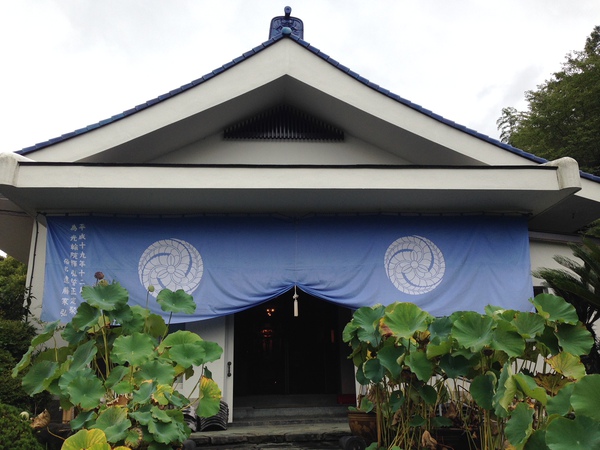
Tokyo Olympics are getting closer and it will be a great chance for Japan to welcome a lot of visitors from abroad and to try to become a more global society than it is now. I'm not here to say if globalization is a good thing or not. Probably for some places like my beloved Venice it has became something more negative than positive. Too many tourists, souvenirs and fast food shops everywhere, loss of local identity.
Japan has always kept its traditions, language and also its population separated from the rest of the World. For centuries. This is one reason why it is still so fascinating to foreign people, I guess. It looks like a place that has to be fully discovered yet.
But then, almost every foreigner that comes to visit Japan for the first time chooses more or less the same itinerary. I had also some friends coming to visit me and they were always like "We're thinking about staying 2 days in Kyoto, Osaka, 2 or 3 days in Tokyo... maybe Kanazawa...".
I've been living and working in the Izu Peninsula for about eight years now, but I'm still so fascinated by its beautiful and uncontaminated nature.
Here you can find everything. Sea all around, round shaped volcanic mountains, old gold mines, natural spa, hystorical buildings, wasabi plantations, large varieties of fishes... so, everything you don't find in big cities like Tokyo.

View from Panorama Park in Izu Nagaoka
This is why during the summer holidays thousands of people come from all over Japan.
But outside Japan? Still so unknown!
Recently, as Shuzenji Town's Velodrome will host the indoor bycicle competitions in 2020, we see some European athletes that started to come to practice here. Local people is still so not used to foreigners that still stares at "us" when we walk by. It is definitley a not globalized area. As I said before, you must take the good and the bad with it.

To Shuzenji, at Nishina Pass
 Shuzenji Velodrome
Shuzenji Velodrome
I use to drive all around Izu Peninsula almost every Sunday with my daughter and I always try to discover new spots that I've never been before. So from next week I'll try to introduce this beautiful and still in a way misterious place!
Alberto
